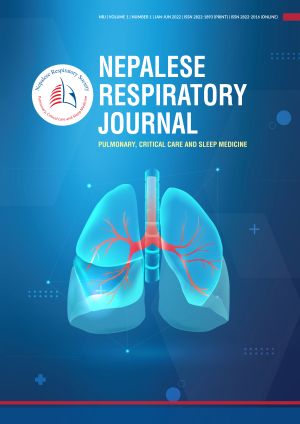Acute Pneumonitis after instillation of Povidone iodine for Chemical Pleurodesis in Secondary Spontaneous Pneumothorax: A case report
DOI:
https://doi.org/10.3126/nrj.v1i1.45239Keywords:
Pleurodesis, Pneumonitis, Pneumothorax, Povidone iodineAbstract
Secondary spontaneous pneumothorax is common in adult and is often life threatening. Surgical intervention is preferred, however chemical pleurodesis is also widely recommended in the treatment of recurrent pneumothorax of different etiologies. Variety of agents such as erythromycin, tetracycline, autologous blood and talc slurry are available for chemical pleurodesis among which povidone iodine is cheap, easily available, effective and safe. In this paper, we report the case of acute pneumonitis after pleurodesis using povidone iodine in a 33 years old female with a known case of lymphangioleiomyomatosis with a history of recurrent pneumothorax.
Chemical pleurodesis was performed using povidone iodine after complete expansion of lung and absence of persistent air leak which was confirmed clinically and radiologically. Post procedure, the patient complained of right sided chest pain and cough. Fever, sputum production and shortness of breath was absent. Chest X-ray revealed new consolidation and infiltrations in the right middle zone. Subsequent CT chest showed extensive parenchymal consolidation and ground glass opacities in the right middle lobe, representing pneumonia with acute lung injury.
The acute pneumonitis spontaneously resolved with supportive care and the patient was discharged after seven days. Though drug induced pneumonitis is not a usual complication of povidone iodine, it is a possibility and has to be considered.
Downloads
Downloads
Published
How to Cite
Issue
Section
License
This license enables reusers to distribute, remix, adapt, and build upon the material in any medium or format, so long as attribution is given to the creator. The license allows for commercial use.




